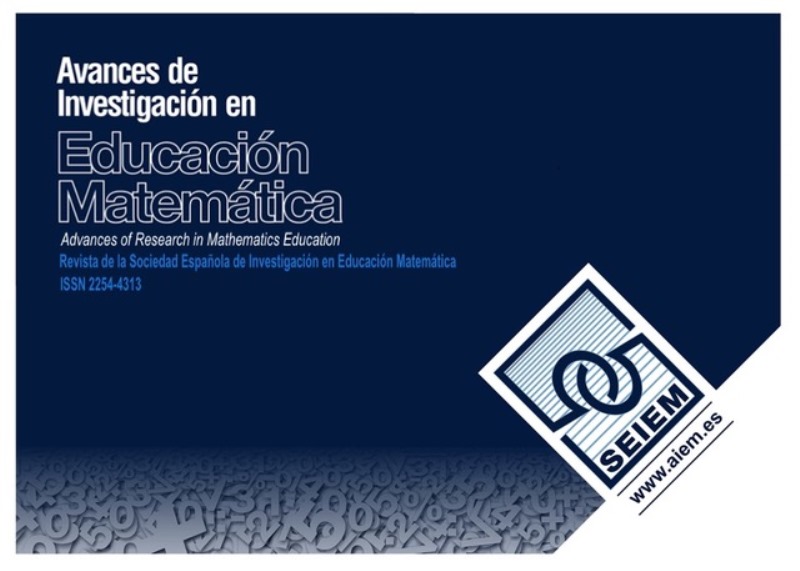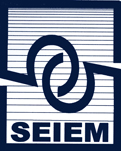Bridging Problem-Solving and Problem-Posing: Third Graders Learning to Formulate Mathematical Problems in Geometry and Measurement
DOI:
https://doi.org/10.35763/aiem28.7553Keywords:
Problem-posing, Problem-solving, Geometry and Measurement, Primary Education, Mathematics TeachingAbstract
This study examines the relationship between problem solving (PS) and problem posing (PP) in mathematics education, focusing on 3rd-graders’ ability to create problems in Geometry and Measurement. A theoretical framework was adopted to assess the evolution of the problems posed, which considers mathematical and linguistic complexity. The study also compared posed and solved problems, for a deeper understanding of the connections between PS and PP skills. Conducted over eight lessons, it combined curriculum-aligned PS and PP tasks. Students’ written work was analyzed qualitatively. Findings show substantial improvements in PP skills, including better mathematical language, grammar and expression, alignment to task prompt, and problem solvability. Initially, students replicated structures from solved problems but gradually showed more creativity and autonomy. The study highlights how task design and the interplay between PS and PP enhance mathematical competencies and offer a viable approach to integrating PP as a learning objective in primary mathematics education.
Downloads
References
Barabé, G., & Proulx, J. (2015). Problem posing: A review of sorts. In T. Bartel, K. Bieda, R. Putnam, K. Bradfield, & H. Dominguez (Eds.), Proceedings of the 37th North American PME (pp. 1277–1284). Michigan State University.
Brown, S. I., & Walter, I. M. (2005). The art of problem posing (3rd ed.). Lawrence Erlbaum Associates. https://doi.org/10.4324/9781410611833
Cai, J., Moyer, J., Wang, N., Hwang, S., Nie, B., & Garber, T. (2013). Mathematical problem posing as a measure of curricular effect on students’ learning. Educational Studies in Mathematics, 83(1), 57–69. https://doi.org/10.1007/s10649-012-9429-3
Cai, J., & Rott, B. (2024). On understanding mathematical problem-posing processes. ZDM – Mathematics Education, 56, 61–71.
https://doi.org/10.1007/s11858-023-01536-w
Canavarro, A. P., Mestre, C., Gomes, D., Santos, E., Santos, L., Brunheira, L., Vicente, M., Gouveia, M. J., Correia, P., Marques, P., & Espadeiro, G. (2021). Aprendizagens essenciais de matemática no ensino básico. ME-DGE.
Carrillo, J., & Cruz, J. (2016). Problem-posing and questioning: Two tools to help solve problems. In P. Felmer, E. Pehkonen, & J. Kilpatrick (Eds.), Posing and solving mathematical problems: Advances and new perspectives (pp. 23–36). Springer. https://doi.org/10.1007/978-3-319-28023-3_2
Gravemeijer, K., & Cobb, P. (2006). Design research from a learning design perspective. In J. van den Akker, K. Gravemeijer, S. McKenney, & N. Nieveen (Eds.), Educational design research (pp. 45–85). Routledge.
Hiebert, J., Carpenter, T. P., Fennema, E., Fuson, K., Human, P., Murray, H., & Wearne, D. (1996). Problem solving as a basis for reform in curriculum and instruction: The case of mathematics. Educational researcher, 25(4), 12–21. https://doi.org/10.3102/0013189X025004012
Jacinto, H., & Carreira, S. (2017). Diferentes modos de utilização do GeoGebra na resolução de problemas de matemática para além da sala de aula: Evidências de fluência tecno-matemática. Bolema: Boletim de Educação Matemática, 31, 266–288. https://doi.org/10.1590/1980-4415v31n57a13
Leavy, A., & Hourigan, M. (2024). Attending to task variables when engaging in group problem posing for elementary level mathematics. The Journal of Mathematical Behavior, 73, 101128. https://doi.org/10.1016/j.jmathb.2024.101128
Özgen, K., Aydin, M., Geçici, M., & Bayram, B. (2017). Investigation of problem posing skills of eighth grade students in terms of some variables. Turkish Journal of Computer and Mathematics Education, 8(2), 323–351. https://doi.org/10.16949/turkbilmat.322660
Palmér, H., & van Bommel, J. (2020). Young students posing problem-solving tasks: What does posing a similar task imply to students? ZDM – Mathematics Education, 52(4), 743–752. https://doi.org/10.1007/s11858-020-01129-x
Papadopoulos, I., & Patsiala, N. (2020). Capturing problem posing landscape in a grade-4 classroom: A pilot study. In U. T. Jankvist, M. van den Heuvel-Panhuizen, & M. Veldhuis (Eds.), Proceedings of the 11th Congress of the European Society for Research in Mathematics Education (pp. 4431–4438). Freudenthal Group & Freudenthal Institute, Utrecht University, & ERME.
Papadopoulos, I., & Patsiala, N. (2023). Problem-posing training and its impact on the quality of the posed problems. In P. Drijvers, C. Csapodi, H. Pálmer, K. Gosztonyi, & E. Kóny (Eds.), Proceedings of the 13th Congress of the European Society for Research in Mathematics Education (pp. 457–464). Alfréd Rényi Institute of Mathematics, & ERME.
Posamentier, A. S., & Krulik, S. (2009). Problem solving in mathematics. Corwin Press.
Radmehr, F., & Vos, P. (2020). Issues and challenges of 21st century assessment in mathematics education. In L. Leite, E. Oldham, A. S. Afonso, F. Viseu, L. Dourado, & M. H. Martinho (Eds.), Science and mathematics education for 21st century citizens: Challenges and ways forward (pp. 437–462). Nova Science Publishers.
Sadak, M., Incikabi, L., Ulusoy, F., & Pektas, M. (2022). Investigating mathematical creativity through the connection between creative abilities in problem posing and problem solving. Thinking Skills and Creativity, 45, 101108. https://doi.org/10.1016/j.tsc.2022.101108
Silver, E. A. (1995). The nature and use of open problems in mathematics education: Mathematical and pedagogical perspectives. International Reviews on Mathematical Education, 27, 67–72.
Silver, E. A., & Cai, J. (1996). An analysis of arithmetic problem posing by middle school students. Journal for Research in Mathematics Education, 27(5), 521–539. https://doi.org/10.2307/749846
Downloads
Published
How to Cite
Issue
Section
License
Copyright (c) 2025 Hugo Fernandes, Hélia Jacinto, Hélia Oliveira

This work is licensed under a Creative Commons Attribution 4.0 International License.
The articles published in this journal are under a license Creative Commons: By 4.0 España from number 21 (2022).
Authors who publish with this journal agree to the following terms:
- Authors retain copyright and keep the acknowledgement of authorship.
- The texts published in this journal are – unless indicated otherwise – covered by the Creative Commons Attribution 4.0 international licence. You may copy, distribute, transmit and adapt the work, provided you attribute it (authorship, journal name, publisher) in the manner specified by the author(s) or licensor(s). The full text of the licence can be consulted here: http://creativecommons.org/licenses/by-nc/4.0.
- Authors are able to enter into separate, additional contractual arrangements for the non-exclusive distribution of the journal's published version of the work (e.g., post it to an institutional repository or publish it in a book), with an acknowledgement of its initial publication in this journal.
- Authors are permitted and encouraged to post their work online (e.g., in institutional repositories or on their website) prior to and during the submission process, as it can lead to productive exchanges, as well as earlier and greater citation of published work (See The Effect of Open Access).









